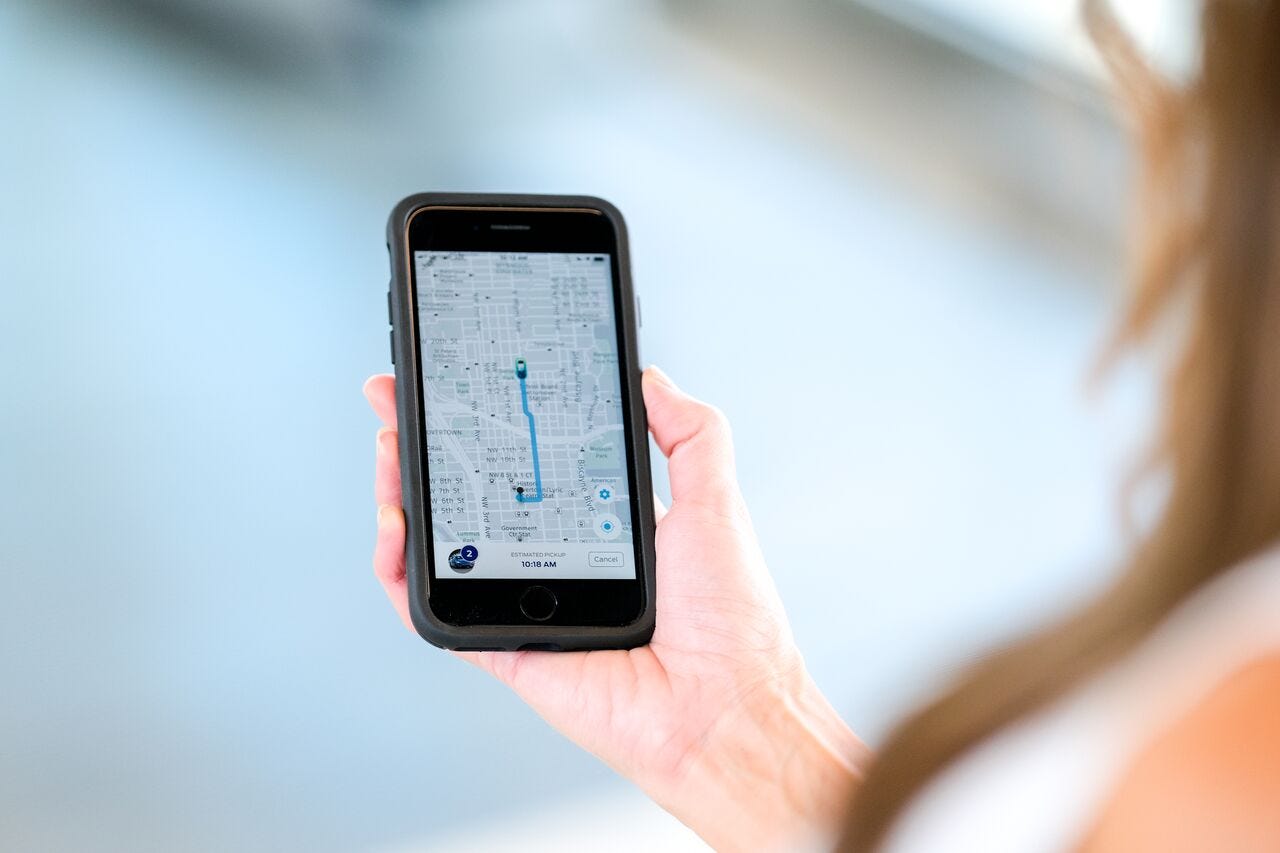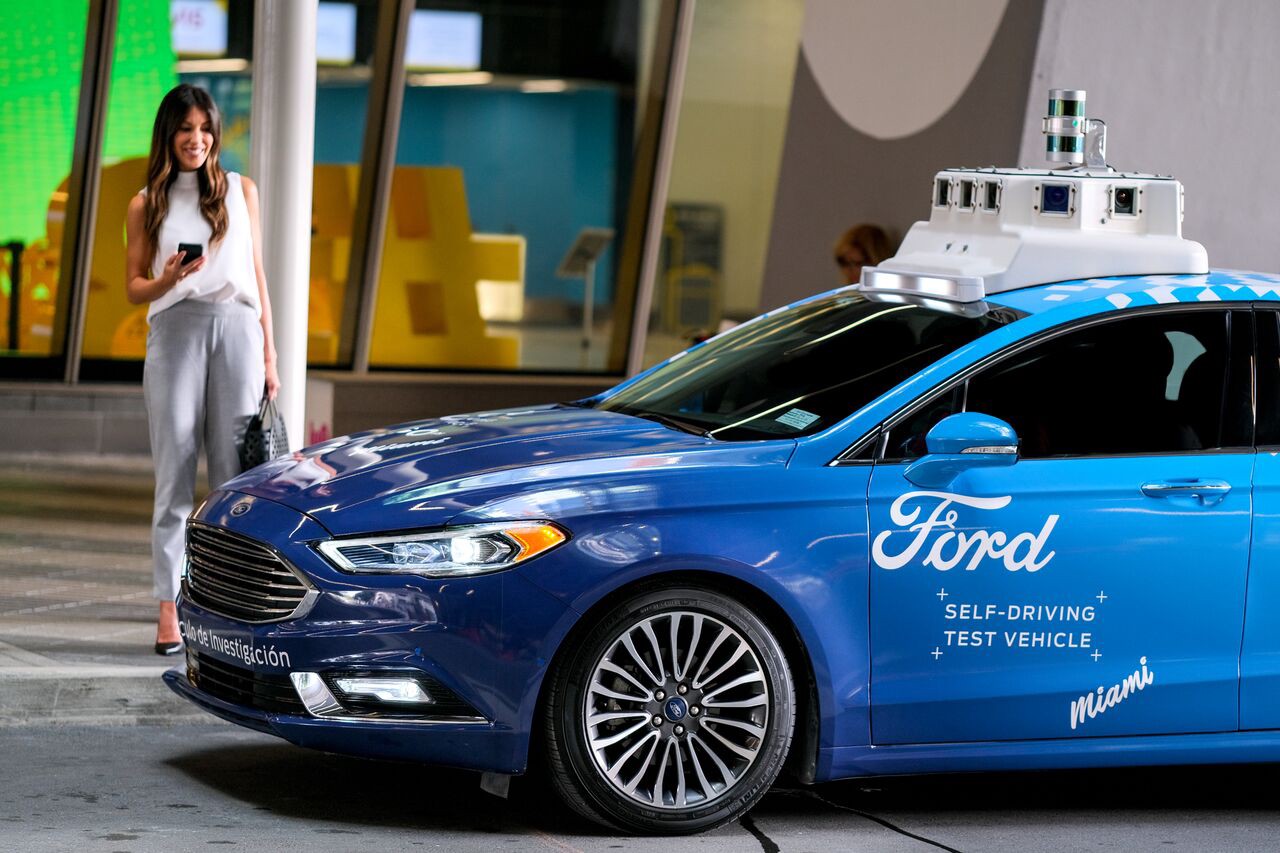Self-Driving Cars Will Give Back Something You Can’t Buy — Your Time
By Amy Marentic, Global Marketing Director, Ford Autonomous Vehicles LLC

Every time I see our self-driving cars successfully navigate urban streets, I’m easily carried away thinking about how much they will improve everyday life. It’s this element that doesn’t get talked about nearly enough: The ability to empower people and businesses to free themselves from many of the mundane tasks of life.
Setting out solely to build a robot car is missing the point. What if, instead, we built a service that helps people be even more productive?
I first got a taste of what self-driving vehicles could mean to people two years ago, when I was working for Lincoln in China. As someone completely unfamiliar with the local driving environment, I was assigned a driver for trips to work and back home. True, I wasn’t actually riding around in a self-driving vehicle, but the experience was a game changer nonetheless, as I didn’t have to do the driving.
All of a sudden, my commutes transformed into something else entirely — I had the opportunity to be at my best. I could catch up on emails, get ready for meetings and edit presentations. When traveling to a location a bit further away than the office, I could sneak in a nap! Commuting became one of the highlights of my day, something I looked forward to when I woke up every morning.
Now that I’ve returned to the U.S., I’m back behind the wheel and I can, without a doubt, tell you that commuting is not the highlight of my day. Instead, I’m realizing what a luxury it is to travel somewhere without worrying about the actual act of driving or the related stress. It’s an experience that allows people to take time that’s not usually productive and suddenly make it productive — and they can define that productivity however they want. You can take calls, read a book, listen to music, or feel free to simply shut your eyes.
So yes, the technology is important. And at Ford, we’re already establishing the foundation for a complete self-driving services business. But we’re not just developing a robotic driver. We’re developing services that should take some of the load off people’s shoulders and make their lives a little bit easier. We’re building a self-driving business to craft — and yes, we use the word “craft” on purpose — an experience that will make it easier to get around busy cities and expand access to transportation. Yet it’s so much more than that.
By Sherif Marakby, CEO, Ford Autonomous Vehicles LLCmedium.com
So what could this service feel like for the average person?
For one thing, it starts with ease of use. Just as I became friends with the driver in China, we want our self-driving vehicles to be welcoming and accommodating. We’ve noticed in our customer experience research that people enjoy getting audio cues from self-driving vehicles — some even like to respond back to them. So we’re looking at how we can seamlessly implement that kind of feedback when people request trips through a ride-hailing app. Currently, our test vehicles in Miami say “Hola! Jump in and relax. Leave the driving to me” when the rider approaches the door to get inside. We are even communicating with people outside the vehicle, using a light bar to tell others when the car is safely yielding.

As we design our purpose-built self-driving vehicle, we’re thinking about how the interior experience delivers what sleek exterior designs deliver today — it’s what’s going to draw people to one service or another. We always want our cars to look good on the outside, of course, but self-driving vehicles will be accessed instead of owned. So giving people a great interior experience is going to be paramount. You can consider the interior the new exterior.
To accomplish this, we’re starting to test out a few different ideas.
One involves making sure our customers trust the service we’re providing and feel secure inside the vehicle. When riders are ready for their trip to begin, they can press “Go” on a built-in screen to make the vehicle start moving. The screen also lets riders have a look at what the self-driving vehicle sees in its surroundings through the various sensors. It displays various objects the vehicle identifies as it follows its route, including moving cars, pedestrians, parked vehicles and more, offering people a little peace of mind and confidence in the technology.
And as I mentioned earlier, inside the vehicle is where people will suddenly have free time, and where we’re working to make sure people can spend that time as they see fit. For example, what if you could have help not just in driving, but in completing errands such as picking up dry cleaning or grabbing some groceries for dinner? Could a self-driving vehicle do these things? These are the types of questions we’re exploring through our self-driving services platform, with new connected services that can drastically increase the amount of options people have.

After all, life is hard. Between making sure your kids get to school, arriving to work on time and managing an entire household, it’s easy to get overwhelmed. But imagine coming home from work in a self-driving vehicle, using it to order dinner from your favorite restaurant then rerouting the car to pick it up, all while playing a game on the screen or using the time to help your kids get a head start on their homework.
Or think about how this technology can make a night out more convenient and fun. You could buy concert tickets with your friends and receive a customized self-driving vehicle experience for the night, with altered mood lighting, the ability to order food and drinks to retrieve at the venue, and the ability to get picked up for a return trip home. Before getting into a vehicle, you’d have the chance to customize climate controls to your liking and load your favorite playlist for the trip. All this without having to worry about parking.
Even for businesses that take advantage of self-driving vehicles to expand access to their products, the technology offers the potential to free up precious time, since people won’t have to be preoccupied with the logistics of delivery services. If you’re a florist or the owner of a takeout restaurant, chances are you don’t like worrying about whether a delivery vehicle has enough fuel to get through the day, whether it’s time for any maintenance, or whether you can even afford having one.
That’s why we’re taking the time to explore how to make deliveries as easy and convenient as possible, too. With our service, small businesses and entrepreneurs will be able to request self-driving vehicles to help them make deliveries during busy hours while having the time — and peace of mind — to focus on what they do best: running their operations and serving their customers.
By Alexandra Ford English, Ford Autonomous Vehicle Business Teammedium.com
So whether they’re used for expanding a business or getting people from one place to another, our self-driving vehicles are meant to empower people by freeing them to achieve their fullest potential. Ultimately, we all know that time is something you can’t buy. But with self-driving vehicles, very soon we’ll have the opportunity to give people time back — and help them be just a little more awesome!
